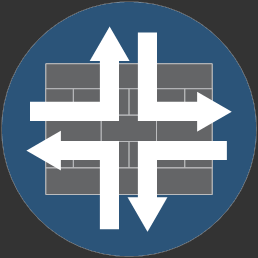
An Overview of OSPF LSA Types and Areas
In the previous post on OSPF found here, we discussed the various OSPF LSA types. Here is a quick recap of what those were:
- Router (Type 1)
- Network (Type 2)
- Summary (Type 3)
- ASBR Summary (Type 4)
- External (Type 5)
- NSSA External (Type 7)
If you are even slightly fuzzy on what these different LSAs are used for in OSPF, please quickly go over that previous post.
The purpose of this post if for us to discuss how these LSAs will be impacted by a multi area area design, especially one that might include special areas. What is wonderful about this exercise is the fact that it allows us to review what these special areas are for, and gives us a richer understand of exactly how they function. Of course, this is from the automatic filtering of certain LSAs from certain areas.
OSPF LSAs and Standard Areas
Think about an area 0.0.0.1 attached to the backbone area of 0.0.0.0. There are Type 1 LSAs flooding in this area 0.0.0.1. If we have broadcast segments, we also have Type 2 LSAs circulating in the area. The Area Border Router is sending LSA Type 3s into the backbone to summarize the prefix information in area 0.0.0.1. It is also taking in this information from the backbone for other areas that might exist. If there is an ASBR out there in the domain somewhere, our area 0.0.0.1 will receive Type 4 and Type 5 LSAs in order to know the location of this ASBR and the prefixes it is sharing with us. Whew! That is a lot going on. This is precisely why we have the special area types!
OSPF LSAs and the Stub Area
What is it that we want to accomplish with a stub area? We do not want to hear about those prefixes that are external to our OSPF domain. Remember what those were? Sure, they are the Type 5 LSAs. In fact, we do not even want to hear about those Type 4 LSAs that are used to call out the ASBR in the network. So the stub area is chock full of Type 1, Type 2, and Type 3 LSAs. In fact, how would this area get to one of those external prefixes it is needed to? We typically use a very special Type 3 LSA for this. This LSA represents the default route (0.0.0.0/0). It is this handy little route that allow devices in this area to get to all of those externals, in fact, to get to any prefix not specifically defined in the Routing Information Base.
OSPF LSAs and the Totally Stubby Area
Ok, with this area we want very little inside it right? Sure. So it makes sense that we are blocking those Type 4 and Type 5 once again, but now we are even blocking the Type 3 LSAs that are describing prefix information from other areas WITHIN our OSPF domain. There needs to be one big exception, however. We need a Type 3 LSA for a default route so we can actually get to other prefixes in our out of our domain.
OSPF LSAs and the Not So Stubby Area and the Totally Not So Stubby Area
Remember, the Not So Stubby Area needs to have those Type 7 LSAs. These Type 7 permit the proliferation of those external prefixes that are entering your OSPF domain thanks to this NSSA area you created. Obviously this area also has the Type 1, Type 2, and Type 3 inside it. Type 4 and Type 5 will be blocked from entering this area as you would expect. In both Juniper and Cisco environments, you can also create a Totally Not So Stubby Area by restricting Type 3s from this area.
I hope you enjoyed these last two posts on OSPF LSAs.
You might also be interested in this very well rated text:
Whatever you do, study with passion my friend!
